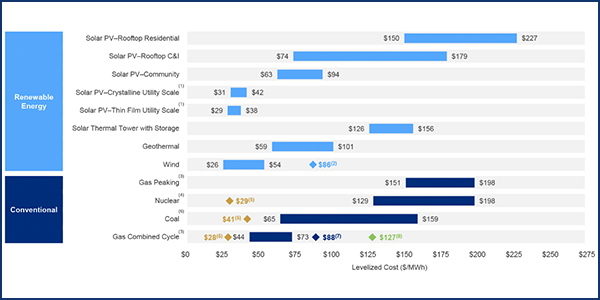The growth of renewable energy resources stemming from technological developments and the resulting cost reductions has caused more than a few skirmishes, FERC Commissioner Richard Glick said on Wednesday.
“We’re seeing growth on renewable energy, and we’re seeing conflict as well: friction between the states’ efforts to promote renewable energy … and FERC’s regulation of wholesale electric markets,” Glick said in opening the first day of Renewable Energy Vermont’s annual conference. This year, the group is holding the conference online and over the course of three months.
“I don’t think there’s necessarily a natural competition or divergence there, but we’ve seen for a variety of reasons traditional electric generators, primarily natural gas and coal, fighting it out in regional electricity markets,” particularly in the Eastern RTOs, Glick said.
He referred to the New England States Committee on Electricity (NESCOE) having earlier this month called on States Demand ‘Central Role’ in ISO-NE Market Design.)
“States want their decisions to be heard in these regional markets,” Glick said. “From my perspective, FERC’s responsibility is to figure out a way to help these RTOs design their markets and oversee [these] design changes to ensure that state policies are accommodated, not blocked. If we don’t do that, I think we’re headed towards a bad situation in which some states are going to drop out of RTOs, and certainly states aren’t going to do anything further that would give FERC additional authority over resource decision-making.”
REV Chair Josh Bagnato asked what FERC is doing that impacts Vermonters who are pushing for the clean energy transition.
“The commission has quite a bit of jurisdiction over the New England electricity market through our oversight of ISO-NE, so almost all wholesale transactions throughout the region are subject to FERC regulation and oversight. So, the decisions we make have a great deal of impact on the resource mix, prices and on reliability,” Glick said.
“I don’t think the people at ISO New England … get up in the morning and say, ‘How can we frustrate or block state programs?’ I don’t think they do that at all, but they are looking at the markets from a different perspective. They want to make sure that the lights stay on and that they provide power at a relatively reasonable price.”
The federal government right now “is relatively AWOL on greenhouse gas emissions, [so] it’s really up to the states at this point to address those issues, and I don’t think the commission blocking state policies, whether it be intentional or inadvertent, is the way to go at this point,” Glick said.
He cited a recent Lazard analysis that said wind and solar are now the most cost-competitive energy technologies, not only in the U.S., but around the world.
“That’s certainly been a pretty dramatic change,” Glick said. Though federal and state policies have helped somewhat, he said, far and away the biggest driver has been consumer demand, and that will certainly continue in the future.
Individual consumers as well as corporate America have concerns about climate change and would like to see a much greener mix in their utilities’ resource portfolio.
At first it was just Big Tech companies, “but now we’re seeing it all over the place, with Proctor and Gamble, Anheuser-Busch, Walmart — companies that you wouldn’t normally think of in terms of the energy space,” Glick said. “They’re saying, ‘We want to be 100% green and have a 100% net-zero emissions portfolio as quickly as possible.’ And they’re demanding that of utilities, which are going out and substantially changing the resource mix.”
Bagnato asked what three magic buttons Glick would push to help the transition to renewable energy.
“The first is more of an esoteric one, which is follow the science,” Glick said. “The U.S. is the only country in the world having this debate. … Two, massively build out the transmission grid to be able to accommodate offshore wind and … onshore wind and solar. Third, we have to have a federal policy. States have been doing a great job, but whether on carbon pricing or whatever, cooperation on a regional basis doesn’t work without a federal overlay.”






